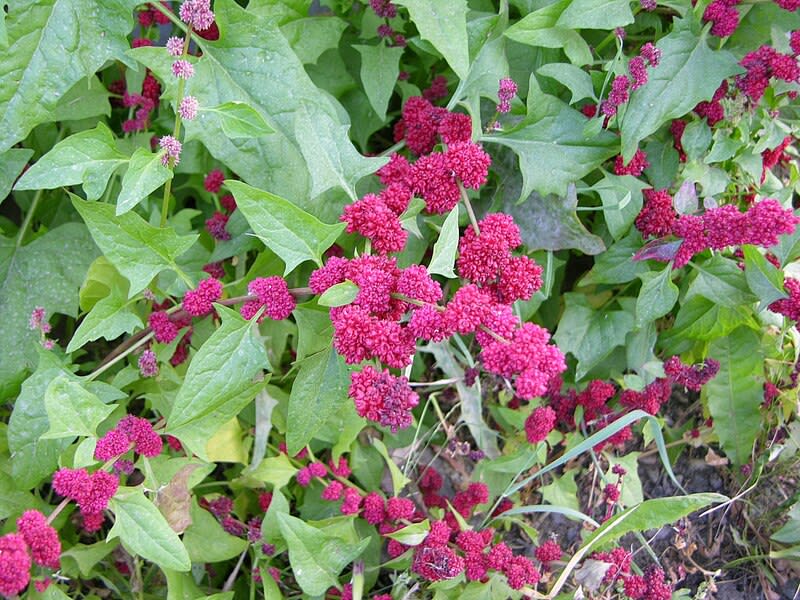Strawberry Spinach, Blite Spinach, Strawberry Blite
Chenopodium capitatum

🌿 Morphology
🌞 Growing conditions
🌍 Origin and family
🌾 Uses
Warning: Despite the care taken in writing this sheet, it is essential to cross-reference sources before using or consuming any plant. When in doubt, consult a qualified professional
Permaculture uses
Strawberry spinach is edible; the leaves can be eaten raw or cooked like spinach, and the bright red 'berries' (actually fleshy calyces) are mildly sweet and can be eaten fresh, in jams, or as a natural food coloring. It is a self-seeding annual, providing a continuous supply of greens and berries. It can also be used as a trap crop for certain pests.
Permapeople description
Strawberry blite is an annual herb whose leaves and fruits are edible. The fruits resemble small strawberries.
Botanical description
Chenopodium capitatum is an annual herbaceous plant in the Amaranthaceae family (formerly Chenopodiaceae). It grows to a height of 1 to 3 feet. The leaves are triangular to diamond-shaped, about 2-6 inches long, and have toothed margins. The 'berries' are clusters of bright red, fleshy calyces that surround the small, black seeds. Flowers are inconspicuous.
Companion planting
Generally compatible with most garden plants. Its self-seeding nature may require some management to prevent it from becoming overly abundant. No well-documented unfavorable companion plants are known.
Propagation methods
Propagation is primarily by seed. Seeds can be directly sown in the garden in spring or early summer. It self-seeds readily.
History and traditions
Strawberry spinach has a history of use as a food source in North America and Europe. Native Americans used the plant for its leaves and fruits. It was also cultivated in European gardens, particularly in the 18th and 19th centuries, as both an ornamental and edible plant.
Usage calendar
Sow seeds in spring. Leaves can be harvested throughout the growing season. 'Berries' ripen in summer. Seeds can be collected in late summer or fall.
